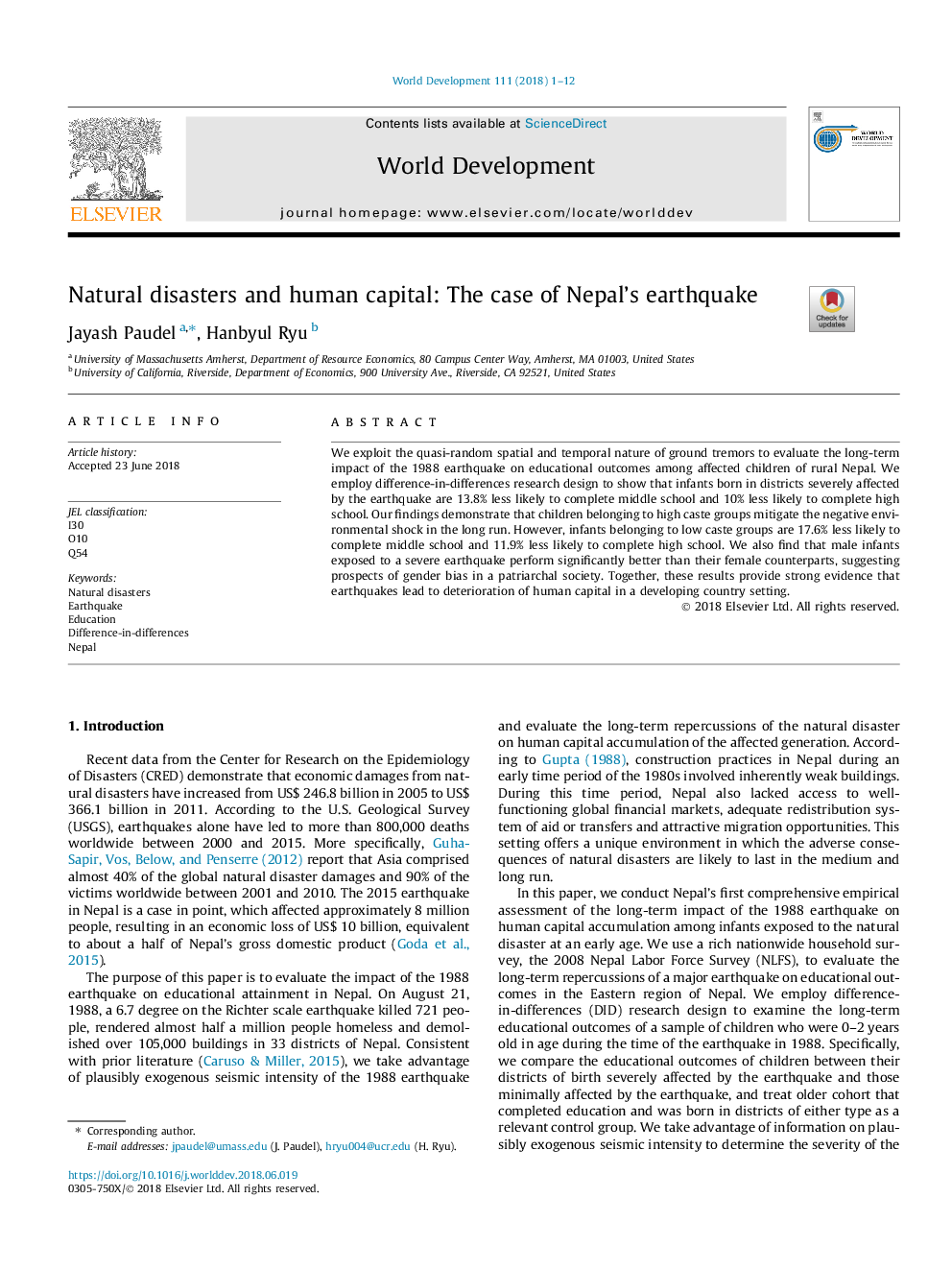| Article ID | Journal | Published Year | Pages | File Type |
|---|---|---|---|---|
| 7391033 | World Development | 2018 | 12 Pages |
Abstract
We exploit the quasi-random spatial and temporal nature of ground tremors to evaluate the long-term impact of the 1988 earthquake on educational outcomes among affected children of rural Nepal. We employ difference-in-differences research design to show that infants born in districts severely affected by the earthquake are 13.8% less likely to complete middle school and 10% less likely to complete high school. Our findings demonstrate that children belonging to high caste groups mitigate the negative environmental shock in the long run. However, infants belonging to low caste groups are 17.6% less likely to complete middle school and 11.9% less likely to complete high school. We also find that male infants exposed to a severe earthquake perform significantly better than their female counterparts, suggesting prospects of gender bias in a patriarchal society. Together, these results provide strong evidence that earthquakes lead to deterioration of human capital in a developing country setting.
Related Topics
Social Sciences and Humanities
Economics, Econometrics and Finance
Economics and Econometrics
Authors
Jayash Paudel, Hanbyul Ryu,
